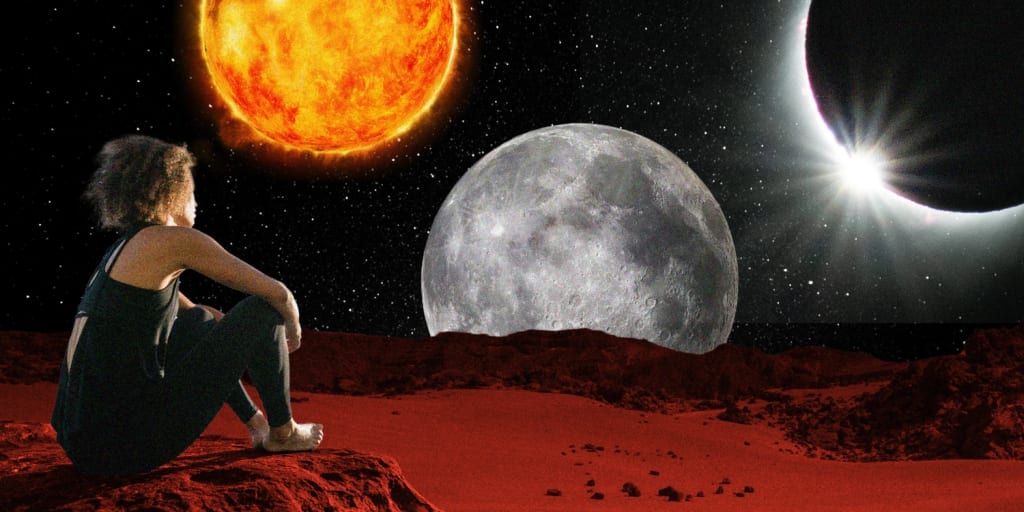
The sun and the moon, celestial companions that illuminate our skies, have captivated human imagination and inspired awe since the dawn of civilization. The sun, a blazing sphere of incandescent gas at the heart of our solar system, is the ultimate source of light, warmth, and energy for all life on Earth. Its radiant brilliance fills the heavens with a dazzling display of colors each day, as it rises in the east and sets in the west, marking the passage of time with unwavering precision. Revered by ancient cultures as a symbol of power, vitality, and divinity, the sun has been worshipped as a god in countless mythologies, from the fiery charioteer of Greek mythology, Helios, to the life-giving deity of ancient Egypt, Ra. Its annual journey through the zodiac constellations, known as the ecliptic, shapes the changing seasons and the rhythms of life on Earth, from the lush bloom of spring to the golden harvest of autumn. Yet, despite its seemingly unchanging nature, the sun is a dynamic and tumultuous star, constantly roiling with magnetic activity and erupting in spectacular solar flares and coronal mass ejections that can disrupt communications, satellites, and power grids on Earth.
In contrast, the moon, Earth's faithful companion in the night sky, exudes a quiet and mystical beauty that has enchanted poets, artists, and dreamers for centuries. A barren and airless world, the moon is bathed in the silvery glow of reflected sunlight, casting a spell of wonder and romance upon the Earth below. Its waxing and waning phases, as it orbits the Earth in a celestial dance, evoke a sense of mystery and magic, symbolizing the cyclical nature of life, death, and rebirth. Revered as a symbol of femininity, intuition, and the subconscious, the moon has been worshipped as a goddess in cultures around the world, from the serene goddess of the night in Hindu mythology, Chandra, to the mysterious lunar deity of ancient Mesopotamia, Sin. Its gravitational pull tugs at the oceans, causing the rhythmic rise and fall of the tides, and its influence on Earth's biosphere is profound, regulating the reproductive cycles of countless species and shaping the behavior of nocturnal creatures.
Despite their differences, the sun and the moon are inexorably linked in a cosmic pas de deux that has endured for billions of years. Each day, as the sun sets in the west and the moon rises in the east, they exchange places in the sky, like celestial partners in a timeless dance. In solar eclipses, the moon passes between the Earth and the sun, casting a fleeting shadow upon the face of the Earth and revealing the sun's corona in a breathtaking display of celestial grandeur. In lunar eclipses, the Earth casts its shadow upon the moon, bathing it in a coppery hue as it passes through the Earth's umbra, the darkest part of its shadow. These rare and wondrous events remind us of the interconnectedness of the sun, the moon, and the Earth, and the delicate balance that sustains life in our corner of the cosmos.
In conclusion, the sun and the moon are celestial marvels that have inspired wonder, reverence, and awe in human hearts for millennia. From their ancient origins as divine beings in myth and legend to their modern-day roles as objects of scientific inquiry and exploration, they continue to captivate our imaginations and deepen our understanding of the universe. Whether blazing in the noonday sky or casting a gentle glow upon the night, the sun and the moon remind us of the beauty and majesty of the cosmos, inviting us to contemplate our place within the vastness of space and time.
About the Creator
Enjoyed the story? Support the Creator.
Subscribe for free to receive all their stories in your feed. You could also pledge your support or give them a one-off tip, letting them know you appreciate their work.






Comments
There are no comments for this story
Be the first to respond and start the conversation.